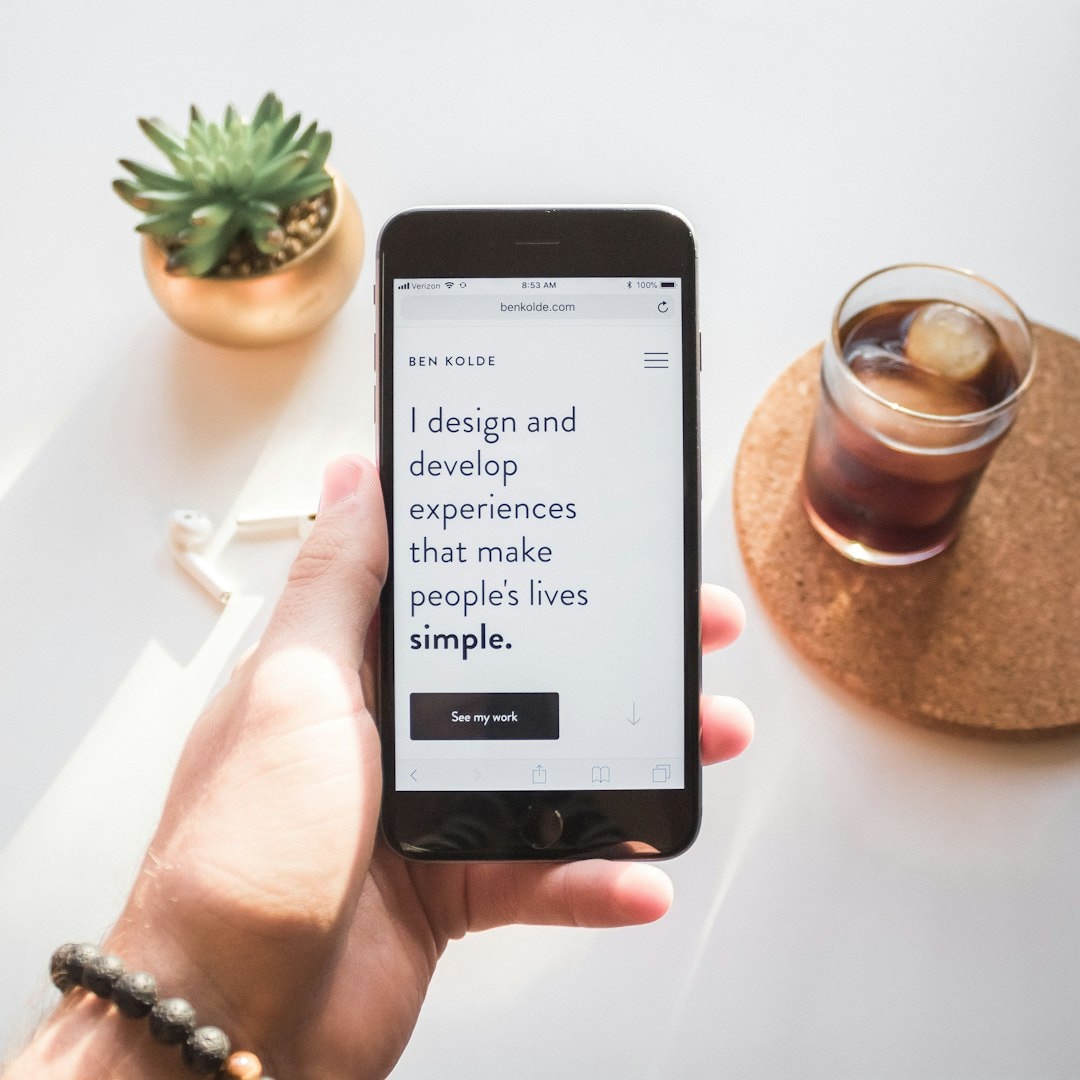In the fast-evolving digital world, having a modern, visually appealing, and SEO-friendly website is no longer optional. It is the foundation of your online presence and a direct reflection of your brand’s credibility. Businesses today are constantly competing for attention, and a thoughtfully designed website can be the difference between capturing leads or losing them to competitors.
At the heart of a well-designed website lies not only great visuals but also solid optimization. On-page SEO tools are essential for ensuring that your site performs well in search results, loads quickly, and provides a smooth experience for users. When combined with cutting-edge design practices, they form the perfect balance between beauty and performance.
This guide explores the most important website design trends every business owner should know to stay competitive and relevant in 2025.
1. Purposeful Minimalism

Minimalism continues to dominate modern web design because it focuses on clarity, simplicity, and user intent. By removing unnecessary clutter and emphasizing only key elements, websites appear more elegant and user-friendly. Minimalist designs often use ample white space, clean typography, and soft color palettes that draw attention to the content itself.
Beyond the visual appeal, minimalism also contributes to faster load times and better usability. Users no longer have the patience to navigate complex layouts, so simplicity translates directly into improved engagement and conversion rates.
2. Mobile-First and Responsive Layouts
In today’s mobile-driven world, over 60 percent of web traffic comes from smartphones. A mobile-first design ensures that your website is optimized for smaller screens before being expanded to desktop versions. This approach improves performance, accessibility, and overall user satisfaction.
Responsive layouts automatically adjust content, images, and navigation based on the device being used. Business owners who fail to prioritize mobile-first design risk losing visibility in search results, as Google now indexes mobile content first.
To stay competitive, your website should load in under three seconds, have easily clickable buttons, and display cleanly across all devices.
3. Immersive Visuals and Micro-Interactions
Modern websites are no longer static pages. They are interactive experiences that tell stories and guide users through a visual journey. Subtle animations, hover effects, and micro-interactions add life to your website and make navigation more enjoyable.
For instance, when a visitor hovers over a button that slightly changes color or expands, it creates a feeling of responsiveness. These small interactions may seem simple but collectively contribute to a more engaging and memorable experience.
Video backgrounds, parallax scrolling, and high-resolution imagery are also trending features. However, designers should balance creativity with performance, ensuring that visuals don’t slow down loading speed.
4. Personalized User Experience
Personalization has become a key factor in web design. Modern websites now use data-driven insights and AI technology to deliver tailored experiences based on visitor behavior. From personalized content recommendations to location-based offers, customization can dramatically increase engagement and conversion rates.
For example, an e-commerce website might show different homepage banners depending on a user’s past purchases or browsing history. Similarly, a SaaS platform can personalize onboarding experiences for new users.
Business owners who embrace personalization build stronger connections with their audience while improving marketing ROI.

5. Accessibility and Inclusivity
Web accessibility is not just a design trend; it is an ethical and legal necessity. An accessible website ensures that people with disabilities can navigate and interact with content effortlessly.
Features like clear color contrast, keyboard-friendly navigation, text alternatives for images, and ARIA labels make a significant difference. Google also rewards accessible websites with higher rankings, recognizing the positive user experience they deliver.
By designing inclusively, your brand demonstrates care, respect, and professionalism, which can strengthen customer trust and loyalty.
6. Dark Mode and Eye-Friendly Design
Dark mode has become increasingly popular because of its modern aesthetic and usability benefits. It reduces eye strain, saves battery life on mobile devices, and makes visual elements stand out. Many major websites and apps now offer both light and dark themes to accommodate user preferences.
For business owners, integrating dark mode means giving users more control over their experience while adding a stylish, contemporary feel to your brand’s online presence.
7. Fast Loading Speed and Core Web Vitals
Google’s Core Web Vitals have made website speed and user experience more important than ever. Modern visitors expect a page to load instantly; if it takes longer than a few seconds, they will likely leave.
Optimizing image sizes, minimizing scripts, and leveraging caching tools are essential steps in keeping your website lightweight and efficient. Businesses that invest in performance not only improve user satisfaction but also achieve higher search rankings.
8. SEO-Focused Design
Design and SEO are now inseparable. A beautiful website that fails to rank on search engines is essentially invisible. Every layout, heading, and image should be structured with optimization in mind.
Integrating meta tags, internal linking, schema markup, and keyword-rich headings all contribute to a site’s visibility. When a design team collaborates closely with SEO specialists, the result is a site that performs well both aesthetically and technically.
As Emma, the author of this article, often reminds clients, great design is not just about how it looks but how it functions in search results and conversions.
But with countless options available, how do you choose the best on-page SEO checker for your needs? The right tool depends on your specific goals, whether it’s boosting rankings, improving website visibility, or simplifying technical SEO audits.
In this comprehensive guide, we’ll break down the top 7 on-page SEO analysis tools, their key features, and how they can help you take your SEO strategy to the next level. Whether you’re using tools or leveraging expert on-page SEO services, the goal is the same: to supercharge your website’s performance. Let’s dive in and find the perfect solution for your needs.
9. AI-Driven Design and Automation
Artificial Intelligence has revolutionized web design by streamlining repetitive tasks and improving user experience. AI-powered tools can now generate color palettes, suggest layouts, analyze user behavior, and even personalize landing pages automatically.
For example, chatbots powered by AI provide real-time assistance, while recommendation engines tailor content to each user. Businesses leveraging AI in design save time and resources while delivering smarter, data-backed experiences.
10. Sustainability and Eco-Friendly Web Design
Sustainability is emerging as a key trend in web design. An eco-friendly website consumes less energy by using efficient coding, compressed images, and lightweight hosting. Optimized websites not only reduce their carbon footprint but also perform better on search engines.
Brands that prioritize sustainability demonstrate social responsibility, which resonates deeply with modern audiences who value ethical business practices.
11. Authentic Storytelling through Design
In a world full of digital noise, authenticity stands out. Storytelling through design means using visuals, typography, and layout to communicate brand identity and values. Instead of filling pages with text, modern sites use strategic imagery and concise messaging that evoke emotion and connection.
A website that tells a story can transform a simple visit into a meaningful experience. This approach is especially effective for service-based businesses that want to build trust and long-term relationships with clients.
12. Integration of Advanced Visual Tools
The rise of no-code and low-code platforms allows designers and marketers to create visually rich experiences without extensive coding. Drag-and-drop builders, animation tools, and AI design assistants are becoming mainstream, helping businesses update and maintain their sites more efficiently.
These tools make it easier to implement trends such as parallax effects, modular grids, and dynamic transitions without sacrificing performance.
13. Security and Trust Signals
A modern website must be secure to gain user confidence. HTTPS encryption, privacy policy visibility, and trust badges are now considered basic requirements. With the increasing number of cyber threats, users are more cautious about where they share information.
A secure website not only protects your data but also improves your reputation and SEO performance. Google prioritizes secure sites in its rankings, making SSL certificates a non-negotiable element of web design.
14. The Rise of Voice Search Optimization
As smart devices and voice assistants grow in popularity, optimizing your website for voice search is becoming essential. Websites that use natural language, structured data, and conversational content are more likely to appear in voice search results.
Voice-friendly design ensures that your content is easily accessible and relevant to the growing number of users who prefer speaking over typing.
Modern website design goes far beyond visual appeal. It is a strategic blend of functionality, SEO, performance, and brand storytelling. Business owners who stay updated with design trends can create websites that attract, engage, and convert visitors effectively.
Whether you are planning a redesign or optimizing your existing website, remember that innovation and usability go hand in hand. Combine aesthetic creativity with technical excellence, and your website will become one of your strongest business assets.

